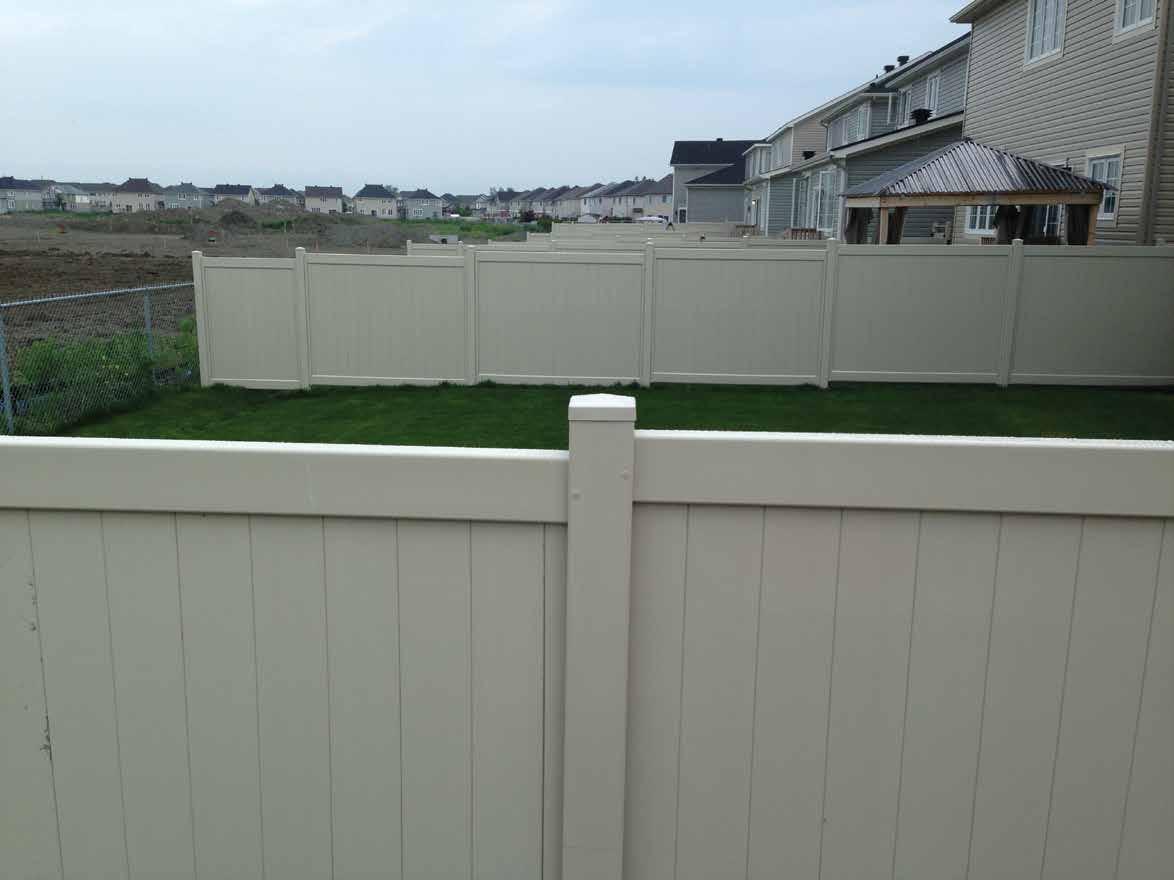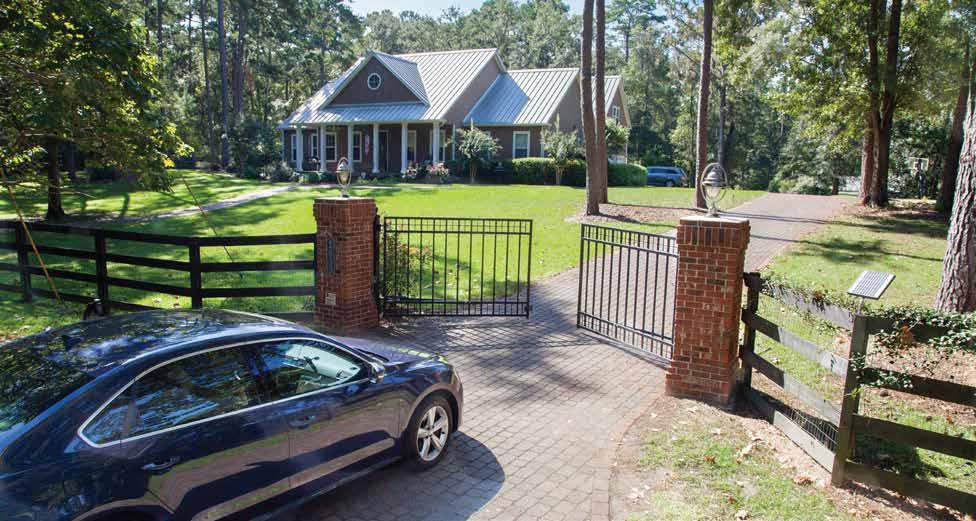
7 minute read
A Step-By-Step Guide to Choosing Gate Operators
Selecting the right gate operator for your customer can be an involved project.
Mark Mattson, Linear® Access Control product manager at Nortek Control, has developed a series of questions, answers and useful tips to help fencing professionals guide their customers.
Mattson has nearly two decades of experience in the access industry and has worked in several roles from operations to marketing to engineering under the Linear access control brand.
“As you know, there are multiple factors to consider when selecting the best operator to meet the customer’s requirements. To help sort this out, we’ve compiled a list of the important questions to answer that will help direct you and your customer to the best solution,” Mattson says.
He recommends the following questions:
What type of gate will the operator be used for? “Ensure that it is only intended for vehicular use as gate operators are not recommended for pedestrian use as serious injuries to people can result from many situations that arise within the surrounding area of a moving gate,” he explains. “A good thing to consider in the decision is that UL 325 regulations have the requirement that pedestrians must not use an opening which is automated for vehicular use.”
For a slide gate, is it cantilever, overhead, v-groove track, roller or enclosed track gate?
For a swing gate, what is the material used and how much of the gate area is covered? Will wind be a factor in the gate operator’s operation?
Is the gate new or existing? If the installation is on an existing gate, it is recommended that the installer open and close it manually to ensure a smooth operation. “Remember, gate operators do not correct gate problems,” Mattson says.
In addition, existing gates that are to be automated must meet the ASTM F-2200 standard for gate construction. Also, does the gate require roller covers? Are the pinch points protected? And, if it is a slide gate, does it include a screen to 2.25 inches?
What is the length, height, and weight of the gate? Is there anything about its construction or installation that prevents it from moving freely or smoothly?
Will the operator be subjected to prolong temperatures that are below freezing? If so, your customer may want to consider adding a heater or cold weather package.Is the installation a single gate or paired dual gate application? Some operators, such as the Linear APeX controller equipped operators enable two gates to be networked together to work as a pair in a dual gate installation. Be sure your supplier includes shielded cabling in the quote, which is needed to support the networked application. Other operators, such as Linear’s PRO-SW series operators offer both arms to be driven by a single controller.
How many cycles will the gate open and close per day? Gates that have a high-duty cycle require a heavy-duty gate operator system. “For high cycle gates positioned away from pedestrian locations, you should consider a variable speed operator; that is a much more efficient and cost-effective solution and one that offers the ability to smoothly move a large, heavy gate at considerably higher speeds,” explains Mattson.
What voltage and phase are required for the gate to operate? This is generally dependent on what voltage is available at the site. “It is recommended to use the highest voltage available at the site along with 3-phase power if it is available,” Mattson says.
How will the gate operator be physically installed? Some operators are designed to be pad mounted, and others post mounted. There is some flexibility in making this decision as many suppliers offer kits to post mount a pad mount operator and pad mount a post-mount operator.
HP1000SS HP1000SS
ULTRA HEAVY DUTY ULTRA HEAVY DUTY HIGH POWER-TO-WEIGHT RATIO HIGH POWER-TO-WEIGHT RATIO ONE MAIN MOVING PART ONE MAIN MOVING PART LOW-FLOW REQUIREMENT LOW-FLOW REQUIREMENT

•• High-impact force High-impact force •• Uses less than 8 GPM Uses less than 8 GPM •• Patented accumulator reduces recoil, adds Patented accumulator reduces recoil, adds power power •• 6” driver tool standard 6” driver tool standard •• Near perfect center of gravity Near perfect center of gravity •• Highest hitting force per pound of tool Highest hitting force per pound of tool •• Self lubrication prevents damage Self lubrication prevents damage •• Closed circuit hydraulics creates no exhaust Closed circuit hydraulics creates no exhaust •• Drives wood and steel up to 6” diameter, Drives wood and steel up to 6” diameter, guard rail and more guard rail and more •• Drives stakes, rods and pins Drives stakes, rods and pins •• Runs off of skid steer loaders and tractors Runs off of skid steer loaders and tractors •• Can be slung or hard-mounted Can be slung or hard-mounted •• 1 year parts and labor warranty 1 year parts and labor warranty
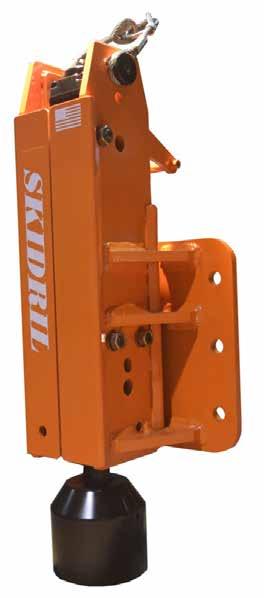

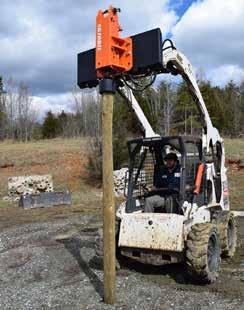
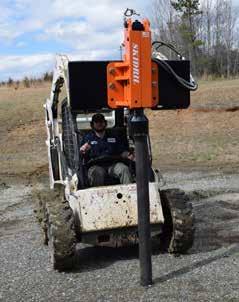
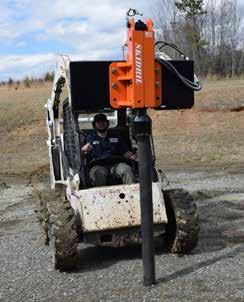
Dimensions: 40 x 18 x 12 (main body without quick-mount plate) Dimensions: 40 x 18 x 12 (main body without quick-mount plate) Weight: 496 LB w/quick-mount plate & tool Weight: 496 LB w/quick-mount plate & tool Pressure: 1650 PSI Pressure: 1650 PSI
Impact Energy: 350 Ft-lb Impact Energy: 350 Ft-lb Flow: 5.5 - 7 GPMFlow: 5.5 - 7 GPM
SKIDRIL SKIDRIL
P.O. Box 8041P.O. Box 8041 Greensboro, NC 27419 Greensboro, NC 27419 Tel: 800-843-3745Tel: 800-843-3745 Fax: 336-674-6690Fax: 336-674-6690
How will the gate operate in the event of a power failure? “This is an essential fail-safe measure to offer your customers,” Mattson says. “For example, all Linear operators have a manual release device as standard, and there are a few models that have a built-in battery backup option.” Check the local codes in the area of the install as some require the use of a battery backup.
If for vehicular use, how will the gate be opened for vehicle entry? Does your customer want the gate to be opened via access control accessories? “The key in this decision is to consider the requirements for residents and guests as well as emergency vehicles,” explains Mattson. What control mechanism your customer wishes to use has a bearing on the gate operator chosen, whether it’s: • Key switch • Keypad • Radio control • Telephone entry system • Intercom • Siren or strobe activated emergency vehicle sensor
Another question to consider is does the install require a gooseneck stand to mount access control devices?
How will the gate close after entry into the property? A built-in auto close timer is the most common method. This requires the use of vehicle detectors (wire loops and loop detectors) to prevent the gate from automatically closing on a vehicle.
How will the gate be opened for exiting vehicles? An automatic exit vehicle detector (free exit loop or probe) is usually the most popular method. Depending on the detector, some may be a plug-in style, others will need to be wired in. Loop wire kits or pre-formed loops and probes are normally part of these systems and can be sold with the operator.
Mattson says, “Taking in all the information above, the basic requirement remains that the selected gate operator be first and foremost safe along with being highly reliable and easily serviced and maintained. Whatever operator is chosen, it must provide cost-effective, long-term operation with the ability to quickly and smoothly open and close to meet your customer’s maintenance demands while also satisfying their access control objectives.”
The Linear website offers a comparison chart of their gate operator products to help contractors better evaluate the various options to better suit their customer’s needs. The guide can be found at www.linear-solutions.com, then click on the Gate Operator section.

EST. 1923

Large Inventory Quick Lead Time Ship Nationwide Custom Vinyl Manufacturing Industry leader for over 95 years.
Distributing national brands of Aluminum, Steel, and Chain Link fence, gates and protective barriers. Manufacturing 100% pure vinyl fence, railings, pergolas and arbors.
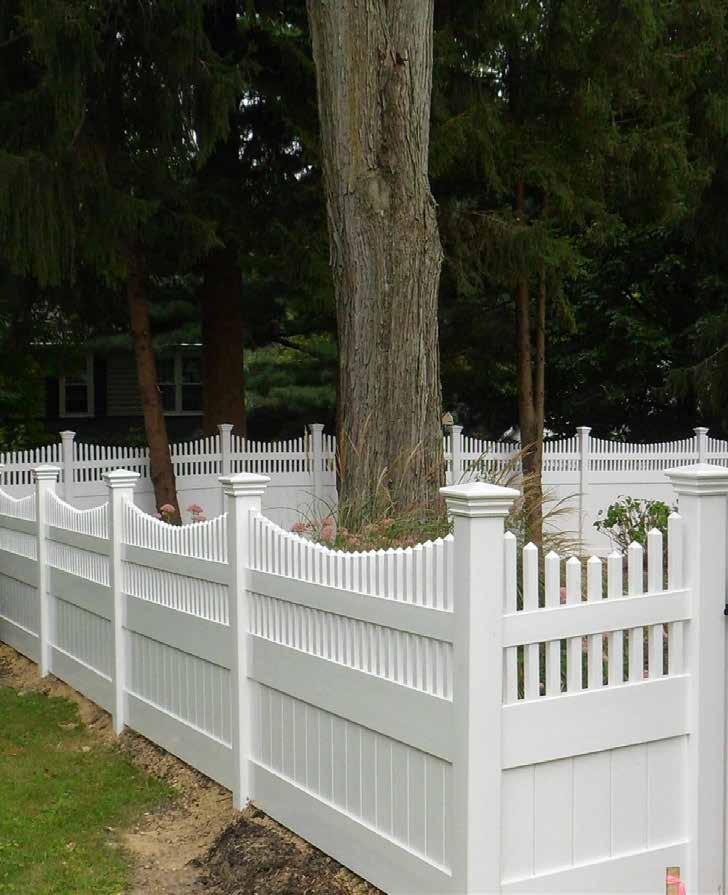
Contact us for all your fence and railing needs. www.sciw.com 800-962-1029

